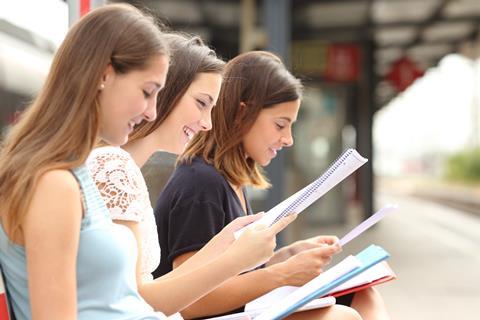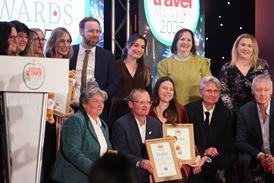Kim Somerville, chief executive for the Council for Learning Outside the Classroom (CLOtC), shares some top tips to make sure your next school trip works for everyone, all of the time.

I love the school summer term and the massive array of amazing educational visits taking place, but it is such a disappointment when I find out that these transformative learning experiences are ‘one off treats’ for the pupils. Especially as we know that the lessons learned outside the classroom are often so much more engaging and powerful than in the classroom. Here are my tips for making your educational visits part of the everyday:
1. Remember what’s on your doorstep as well as far away
Learning outside the classroom has the most impact when progressive experiences start on your doorstep. Whether it is searching for the history hiding in the high street or visiting a care home, starting small and progressing to big trips throughout a pupil’s time at school is the best way to build memorable experiences and a powerful tool to help raise attainment and teach core areas of the curriculum. It’s also much more affordable.
2. Do something different
It’s easy to fall into old habits when planning educational visits. You had a great time last year, you know what to expect if you go back to the same venue… and before you know it you have been going to the same venue for ten years to do the same activity.
Start your planning by thinking about what you want to achieve for this particular group of young people. Then think about what learning locations and activities will help you to achieve your objectives.
A compelling learning experience:
- has clear learning outcomes relating to what learners need to know and understand, the skills they will acquire and areas of personal development;
- is real and relevant, connecting learning at school to the world beyond the classroom;
- draws together several aspects of learning, by using cross-curricular opportunities or chances to develop personal, social, learning as well as thinking skills;
- gives pupils the chance to think critically, make decisions, take responsibility and manage risks;
- broadens horizons and raises aspirations, offering contexts that challenge learners and encourage them to step outside of their comfort zone.
3. Involve young people in planning
Your educational visits are more likely to be successful if you involve young people in their planning and delivery. Pupils can research venues or providers, plan or deliver activities, or fundraise. Young people who have been involved in the planning process will be better prepared, make more informed decisions and be more risk aware.

4. Think about the needs of the group and individual pupils
Getting out of the classroom provides opportunities for young people to learn in different places and in different ways to those typically offered in a classroom. It can provide powerful learning opportunities to young people whose preferred learning style is not best served by the constraints of the classroom, giving opportunities for: direct experience; ‘hands-on’ practical work; experiencing ‘awe and wonder’; practical teamwork; directly encountering other cultures or religions; and enjoyment and fun.
When using a provider, collaborative planning is crucial to ensure that the maximum benefit is derived from the visit. Liaise with the provider beforehand to plan how the chosen activities can draw on and develop the learning that has taken place at school. If the leader’s professional skills and their knowledge of the particular needs of the young people are not used well enough, there is the danger that the visit may be an isolated special event, rather than an extended and powerful learning experience.
5. Work in partnership with external providers
When using a provider, collaborative planning is crucial to ensure that the maximum benefit is derived from the visit. Liaise with the provider beforehand to plan how the chosen activities can draw on and develop the learning that has taken place at school. If the leader’s professional skills and their knowledge of the particular needs of the young people are not used well enough, there is the danger that the visit may be an isolated special event, rather than an extended and powerful learning experience.
6. Take a sensible approach to risk management
Planning for learning outside the classroom involves weighing up the benefits against any potential risks which may arise and making plans to avoid or reduce the latter if they outweigh the benefits. Health and Safety procedures should be proportionate and appropriate to the activity but not unnecessarily onerous.
If you work in a school your educational visits coordinator or more experienced colleagues will be able to support you. Your local outdoor education adviser will also be able to offer advice and training if required. Visit www.oeap.info for more.
7. Don’t get bogged down by paperwork
The Learning Outside the Classroom Quality Badge is the national benchmark for the provision of educational visits, recognising organisations offering good quality educational experiences where risk is effectively managed.
Endorsed by the Department for Education, the LOtC Quality Badge is designed to give schools assurance regarding the safety and quality of LOtC and to cut red tape. The LOtC Quality Badge is the only accreditation scheme for all types of LOtC provision, from adventurous activities and farms through to museums and expeditions overseas – meaning that you only need to look for ONE accreditation when planning visits. www.lotcqualitybadge.org.uk
8. Think about what happens when you get back to school
Think about what happens after the visit to ensure the maximum impact on learners’ achievement and personal development. It is essential that your educational visit is evaluated in the same way as other interventions. This reflection will help you to recognise success and identify areas that are less effective and may need to be changed.
9. Just do it
Learning outside the classroom should not be about a once-a-year school trip. To be most effective, learning outside the classroom, should be a regular part of school life, building upon and supplementing traditional teaching inside the classroom. It should be built into planning for all learners, every week and all year round. By far the most effective strategy is to take a whole school approach to your learning outside the classroom provision. If it improves learning, boosts wellbeing and it’s fun, why have a little bit of something you like, when you can have it all year round?
For more guidance on how to make learning outside the classroom part of the everyday, take a look at the LOtC Mark for Schools: www.lotc.org.uk/lotc-accreditations
And to learn more about delivering a broad and balanced curriculum book your space at The National Conference 2019: Beyond the Classroom at the Blackpool Tower Ballroom on 7th November.
10. Integrate LOtC across the curriculum
Learning outside the classroom is a potent teaching tool that can be applied across ALL areas of the curriculum from reading, writing and numeracy to Science, History and Citizenship.
- Think about what you COULD do, in an ideal world with a clean slate:
- Don’t think about individual lessons or individual topics but a whole school approach.
- Consider what you want your children to achieve and how learning outside the classroom can help.
- Get into the habit of asking “would this lesson be taught better outside the classroom?”
















